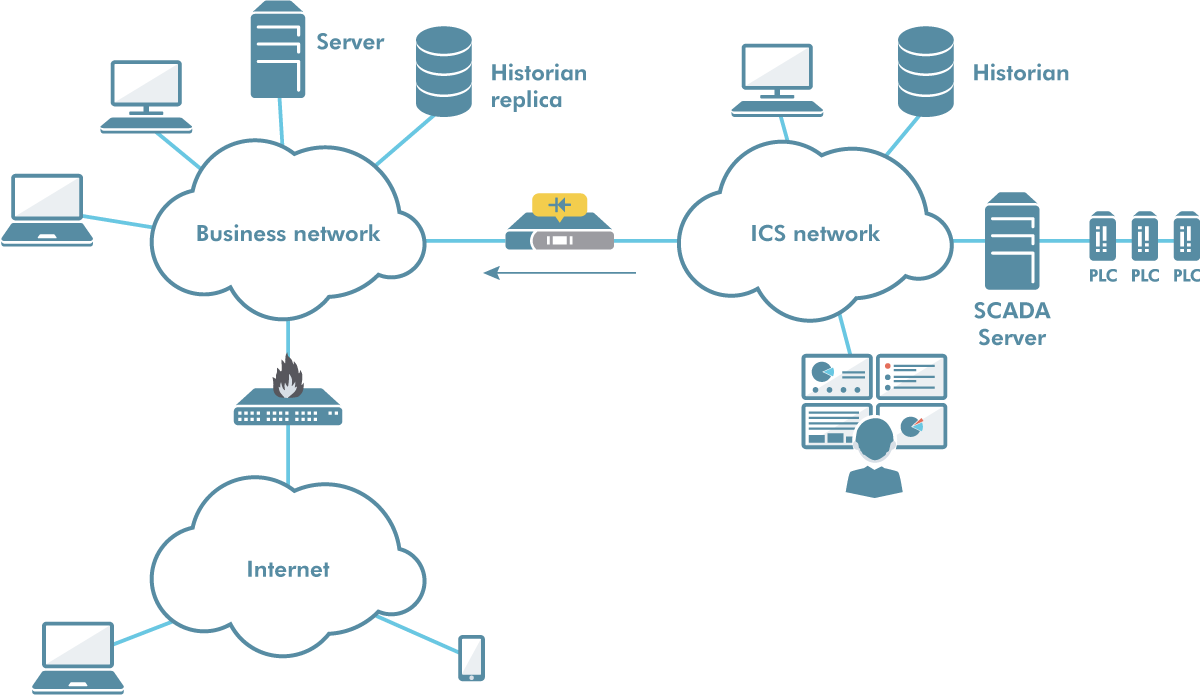Services
IT/OT integration
Digitalization means that IT and OT systems are connected. This integration presents security challenges and requires special solutions.
Operational Technology (OT) refers to all the subsystems needed to manage and monitor a physical process, for example at a power station or a factory. OT usually consists of programmable logic controllers (PLCs) and supervisory control and data acquisition (SCADA) systems. IT refers to the business and office systems that most organizations use.
Historically, OT systems were often entirely standalone. However, the need to connect OT to other systems has grown with the digitalization of society. IT and OT are therefore connected, and similar technology is often used in IT and OT. The different needs in IT and OT can easily lead to challenging technical conflicts.

Integrate IT and OT Securely
Operational Technology (OT) refers to all the subsystems needed to manage and monitor a physical process, for example at a power station or a factory. OT usually consists of programmable logic controllers (PLCs) and supervisory control and data acquisition (SCADA) systems. IT refers to the business and office systems that most organizations use.
Historically, OT systems were often entirely standalone. However, the need to connect OT to other systems has grown with the digitalization of society. IT and OT are therefore connected, and similar technology is often used in IT and OT. The different needs in IT and OT can easily lead to challenging technical conflicts.
Separate and Monitor Data Flows
Physical separation of IT and OT using zoning
Separating IT and OT into separate segments helps avoid vulnerabilities or disruption in IT affecting OT. To avoid risks as a consequence of mistakes in configuration or function, physical segmentation (zoning) should be used. This means that separate hardware is used for IT and OT.
Use data diodes in the zone border for outbound data flows from OT
The most secure way to connect an integrity sensitive data network to other systems is to use data diodes. All data flows from OT that can be managed with data diodes involve a simplified security analysis, quite simply because a data diode is so secure and easy to analyses. Or, more correctly, because it has such high assurance. :
- Database mirroring : One method for exporting data from the OT zone is to mirror the contents of a data- base from the OT zone. By creating a copy of the contents of the database on the IT side, you can allow read access to all systems that need to access the database contents.
- XML export : Another method is to create an XML file in the OT zone, containing all the data needed out- side OT. This file is then sent regularly by ftp/sftp to a recipient in the IT zone.
- Screen mirroring : It is frequently necessary to be able to monitor a process in the OT zone from the IT zone. Creating a screen view in the OT zone and exporting a copy of the screen across the zone border via a data diode permits real-time observation with no risk of the connection being used for attacks on the OT zone. An identical screen view is displayed in the IT zone.
Information whitelisting in the zone border
For data flows for which data diodes are not suitable, you can instead use systems that secure the information flow, such as Zone Guard. To avoid malicious code intruding and affecting the process, it is important to have strict separation between, and monitoring of, all data flows across the zone border. The most secure method is to have strict control over the information that is permitted to cross the zone border. For example, by not allowing transport protocols to pass the zone border, you entirely avoid many of the risks that you might otherwise face.
Optimum Balance Between Function and Security
By physically zoning IT and OT and using data diodes and Zone Guards in the zone border, you achieve an optimum balance between function and security. Consequently, you can accelerate the digitalization process without risking the availability of OT, and you also avoid having to spend time and effort on analyzing any of the outbound flows from OT. Choosing data diodes and Zone Guards gives you a future-proof solution that is considerably less likely to need change over time than a solution based on traditional firewalls and intrusion detection systems. To read more about our data diodes and Zone Guard, please visit advenica.com.

